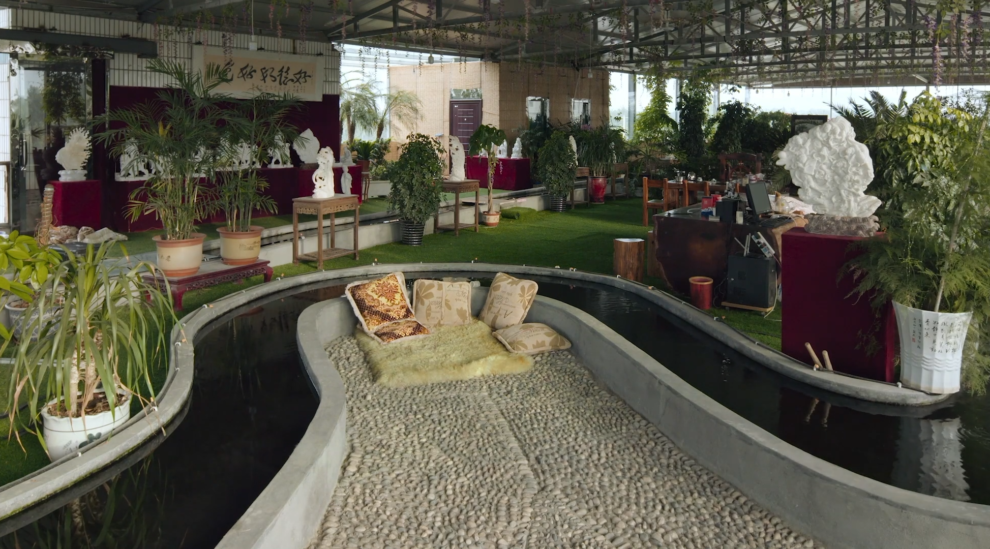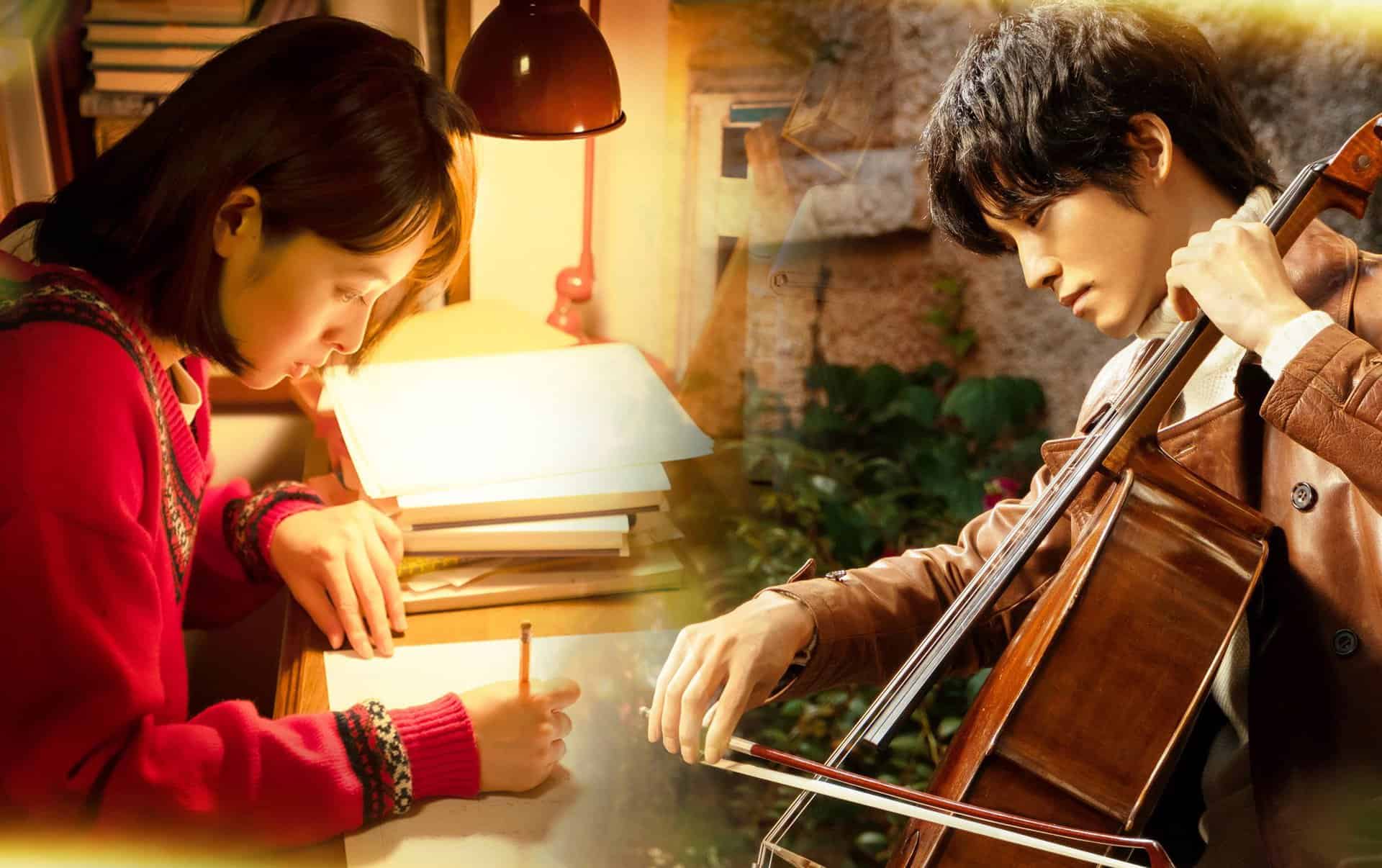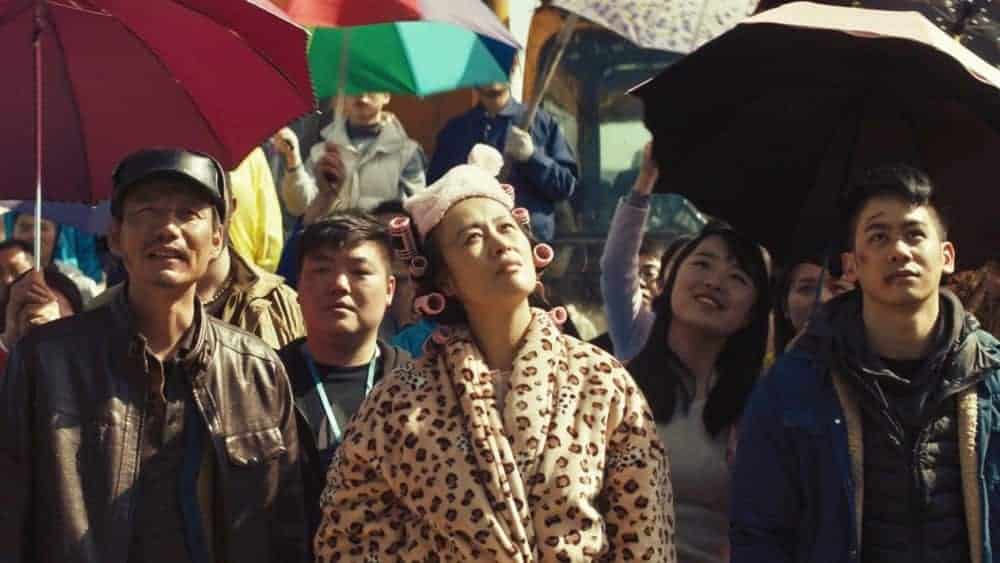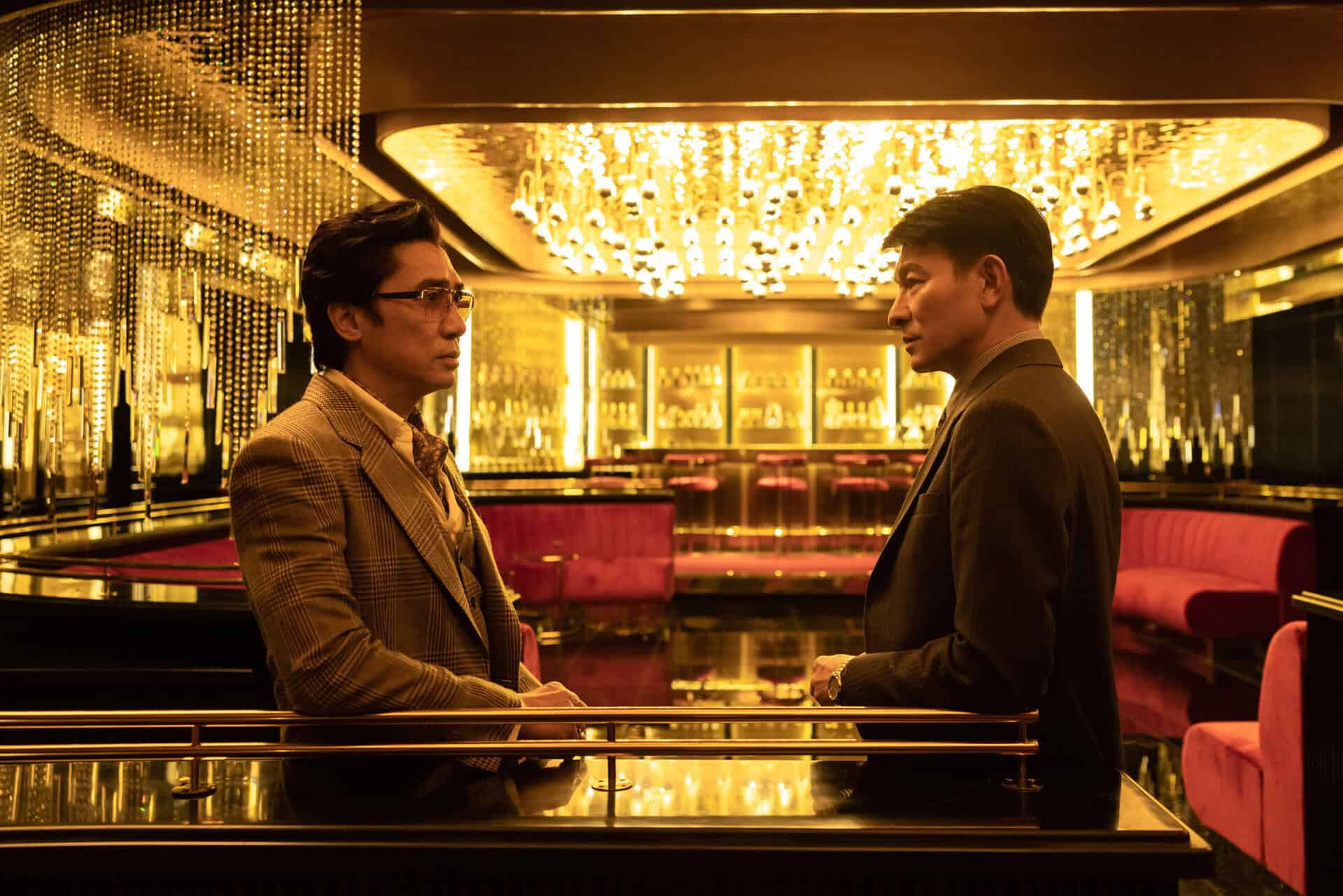Similarly to his debut “Lady of the Harbor”, Sean Wang's sophomore documentary “A Marble Travelogue” which premiered at the IDFA, studies the relationship between China and Greece. This time, however, he decides to follow the travel of commodities between both countries, and more precisely, that of Greece's biggest exports – marble.
From the opening seconds, the artificiality of the world we see in “A Marble Travelogue” engulfs us. At times, especially towards the middle when the director's lens turns to China, we cannot but wonder if we are watching an elaborate mockumentary. And as much as we might try telling ourselves that these surreally fake places are real, on a subconscious level, we still can't accept it. A temple that looks like halves of two temples, one Chinese, one European, sloppily glued together, or a Paris-cum-Amsterdam in rural China simply cannot exist. Cannot be real. But they are, though we feel like they shouldn't.

The artificial and kitschy aberrations shown in the majority of documentary, Eiffel Tower next to European-looking castles in a smog-filled Chinese village, rows of Venus de Milo in front of a kitschy palace-cum-museum manage to surprise, even shock us, because though they exist within time and space, we simply cannot connect what our eyes see with what we know about the world we live in. This all creates a very surreal experience, at times incredibly unnerving and uncomfortable.
This feeling is further helped by the way Wang chooses to shoot his films. Every shot is meticulous and aesthetically pleasing, yet barren and unreal. The colors pop, the image is incredibly sharp, the contrast is incredible. And within all of this, there is almost no human presence, or at least, there is very little of it. It is as if these places are shots from horror movie sets than actual inhabited spaces. This is further strengthened by Wang's choice to pay tribute to different horror movies within his documentary, most notable of which is the tricycle scene from “The Shining.” This time, however, instead of a haunted hotel, it is set in an equally disturbing wholesale mall specializing in tourist trinkets, most notable for our discussion, marble fridge magnets. Is this place haunted by the ghost of neoliberalism and consumerism?, the director seems to say.
“A Marble Travelogue” isn't completely devoid of human presence, though. Rather, when a person appears, be it a Chinese master sculptor or a worker in one of the seemingly endless factories for tourist things, he never seems to fit their environments. The reason for this is mainly the fact that they look like normal, even somewhat provincial, people who seem more at home in a normal apartment somewhere rather than in these imposing sumalcra.
The only ones who seem at home at the surreal kitsch shot by Wang are the Greek twins Marianna and Sofia Erotokritou. Impossibly fake at all times, they behave like the world is a YouTube video and they are its stars. Fluent in Chinese, they appear in different events around the country, promoting Greece and sweet-talking the Chinese nouveau riche to invest in Greece. As we see through the movie, nothing in the country seems to be off-limits for the rich – from Greek weddings to Orthodox baptism ceremonies done for the camera. As long as there is money, anything is possible, even selling your own country off, the twins happily imply.
At its core, however, “A Marble Travelogue” is a movie about human greed and the destruction people are willing to inflict on nature and others, just so they can have money. Thus, the movie traces the spacial and hierarchical movement of the precious valued rock. Through space, it travels from Greece, and as we later learn, other places on earth, to the biggest stone market in the world. Earlier, it was in USA, now it is in China, we learn from a slimy French businessman. And from there – to different provincial towns where it adorns gaudy mansions in the form of pseudo-European columns and statues, or back to the lands of its origins in the form of souvenirs or kitschy sculptures. The latter, importantly, are never never signed by their Chinese creators, always sold under a fake European name. This last fact, mentioned in passing by a famous Chinese sculptor, speaks volumes about the commodification of art, as well as the fake pretense behind it. The contemporary world, which is supposedly globalized and open to arts from everywhere, is not. It is still stuck in its old ways, where everything made in the west is considered best. The irony and sadness, Wang says, is that nothing is made there. It's all made by and bought by China.
This brings us to the second type of travel, the hierarchical one. Apart from the palaces of the rich, it also goes to the small factories where it is ground and made into fridge magnets and other such trinkets. In a surprisingly humane for this movie scene, the director speaks with a small girl, working in one of these factories, offering to give her his mask, so she doesn't get sick from the dust and paint fumes that fill the air of her workplace. Unsurprisingly, she declines his offer, even wondering a bit why would he even want to give her protective gear. Nowhere else in the film does he speak with his subjects. To be more exact, nowhere else does he treat them in a humane way. And as we learn by the end of the documentary, they don't deserve it for all of them, from the Greek twins to the French stone seller are nothing more than abusers, both of Earth and the poor.















